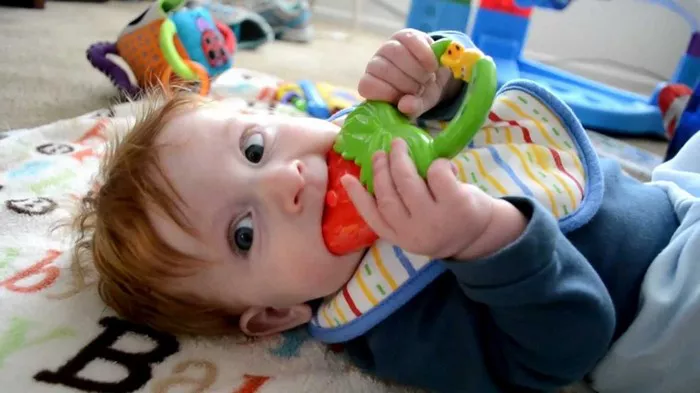Parents today strive to provide the best for their children, investing in everything from comfortable clothing to nutritious meals. However, despite their best efforts, many are unaware of the hidden dangers posed by toxic baby products. These items, often marketed as safe, can contain harmful chemicals that pose serious health risks to infants and young children.
Growing Concerns Over Toxicity
In recent years, the issue of toxicity in baby products has gained significant attention. This heightened awareness stems from a combination of scientific research, regulatory changes, and the increased availability of information through social media and online platforms. According to Dr. Shreya Dubey, a consultant in neonatology and pediatrics at CK Birla Hospital in Gurugram, parents today are more informed than ever. “Concerns about chemicals like BPA, phthalates, and parabens are widely shared on social media, blogs, and online communities,” she explains.
The first few years of a child’s life are critical for brain and body development. As such, even low-level exposure to toxic substances is becoming a growing concern for many parents. Increasingly, caregivers are seeking natural and non-toxic alternatives for their children.
Dr. Gowri Ravi Chinthalapalli, a consultant in child development at Aster CMI Hospital in Bengaluru, notes a significant uptick in demand for organic and natural products aimed at minimizing harmful chemical exposure. “Parents are becoming more cautious about what they bring into their homes and how it may affect their children’s health,” she asserts.
Understanding Harmful Chemicals
Several harmful chemicals commonly found in baby products can pose serious health risks. Dr. Chinthalapalli highlights the dangers of substances such as phthalates and triclosan, which are often found in fragrances, plastics, and food packaging. These chemicals have been linked to hormonal disruptions, antibiotic resistance, and various health issues.
One of the most concerning substances is bisphenol A (BPA), which is commonly found in plastic baby bottles and the linings of canned foods. BPA can leach into food and beverages, particularly when heated, and has been associated with reproductive problems and an increased risk of cancer.
Additionally, sulfates—such as sodium lauryl sulfate (SLS) and sodium laureth sulfate (SLES)—are prevalent in many shampoos and body washes. These strong detergents can strip the skin of its natural oils, leading to irritation and allergies. Talc, often used in powders to prevent diaper rash, has raised concerns due to its potential carcinogenic properties.
Dr. Dubey further emphasizes the risks associated with toys, which are an integral part of childhood. Many toys can contain toxic substances such as lead, phthalates, BPA, and polyvinyl chloride (PVC), all of which may contribute to developmental issues in young children.
These harmful chemicals are often added to baby products for various reasons, including extending shelf life, enhancing product texture, and making clothing wrinkle-resistant. However, the long-term effects on health are increasingly coming into question.
Research Findings on Baby Products
Studies have revealed alarming findings regarding the safety of products designed for infants and toddlers. A significant investigation into items such as car seats, breastfeeding pillows, changing pads, crib wedges, and bassinet mattresses found that 80 percent of the tested products contained chemical flame retardants. These substances are known to be toxic and may pose additional health risks.
The prevalence of harmful chemicals in baby products is troubling for parents who wish to provide safe environments for their children. The challenge lies in navigating a marketplace that often prioritizes profit over safety, making informed choices crucial.
Tips for Choosing Safer Baby Products
To protect their children from the potential dangers of toxic baby products, parents can take several proactive steps:
1. Research Products Thoroughly
Before purchasing baby items, parents should conduct thorough research. Look for brands that are transparent about their ingredients and manufacturing processes. Websites, reviews, and certifications can provide valuable insights into product safety.
2. Opt for Natural and Organic Options
Whenever possible, choose natural and organic products. These items are less likely to contain harmful chemicals. Look for certifications, such as USDA Organic, that guarantee a higher standard of safety.
3. Read Labels Carefully
Always read product labels and ingredient lists. Be wary of items that contain phthalates, parabens, BPA, and other harmful substances. Many manufacturers now label their products as “free from” certain chemicals, which can be a helpful indicator.
4. Choose Non-Toxic Toys
Select toys made from natural materials, such as wood or organic cotton, rather than plastic. Ensure that toys meet safety standards and do not contain harmful chemicals.
5. Avoid Scented Products
Be cautious with scented baby products, as they often contain synthetic fragrances that can include harmful chemicals. Opt for fragrance-free options when possible.
6. Educate Yourself and Others
Stay informed about the latest research and recommendations regarding baby products. Join parenting groups or forums where experiences and knowledge can be shared, fostering a community of awareness.
7. Consult Health Professionals
If unsure about the safety of certain products, consult pediatricians or child development experts. They can provide guidance on what to look for and how to ensure a safe environment for children.
Conclusion
The presence of toxic substances in baby products is a serious concern for parents dedicated to providing safe and nurturing environments for their children. By staying informed and making conscious choices, caregivers can mitigate the risks associated with harmful chemicals.
As awareness grows, so does the demand for safer, non-toxic alternatives. Parents are increasingly committed to protecting their children from the hidden dangers of everyday products. By researching thoroughly, opting for natural options, and being vigilant about ingredient safety, families can help ensure a healthier future for the next generation.
In a world where product safety is often compromised, it is crucial for parents to remain proactive in seeking out safe and reliable options. The health and well-being of their children depend on it.
Related topics:


